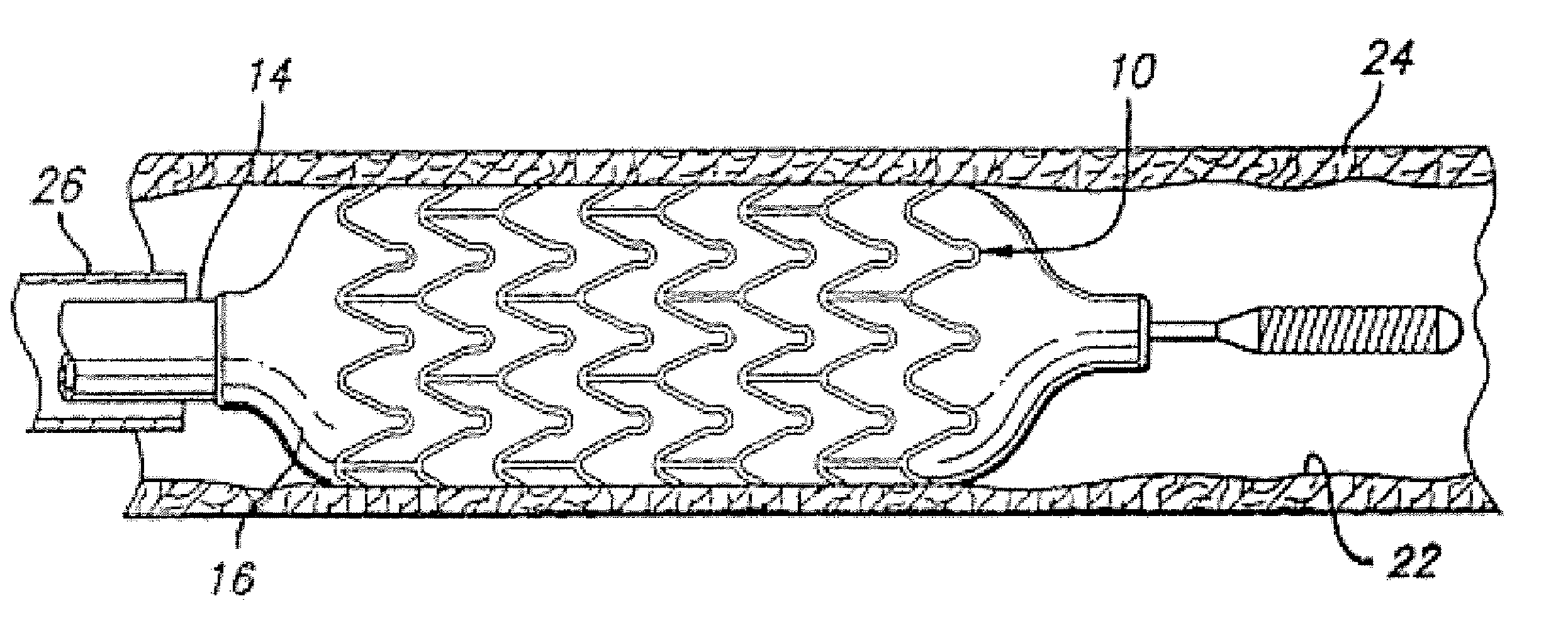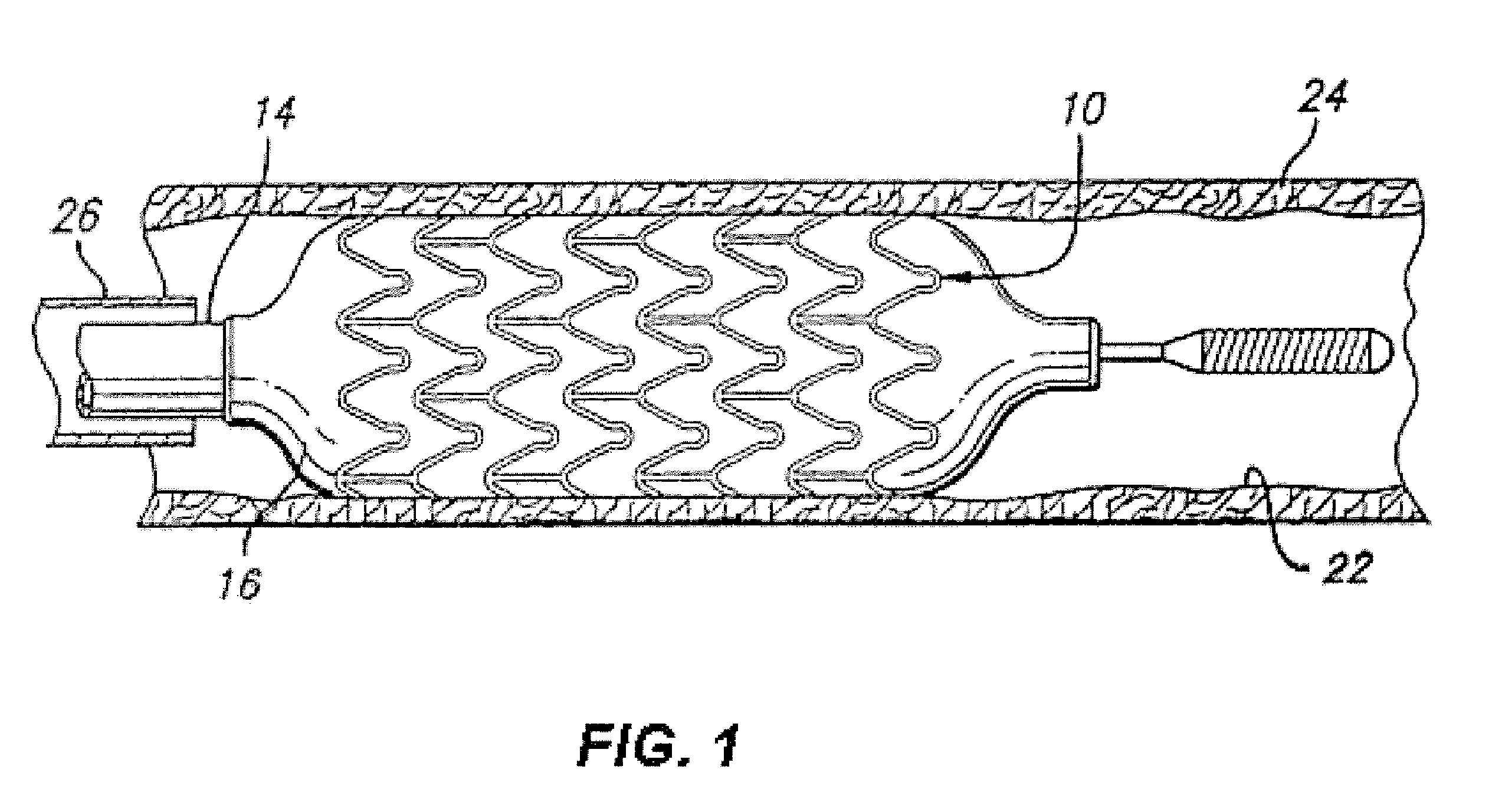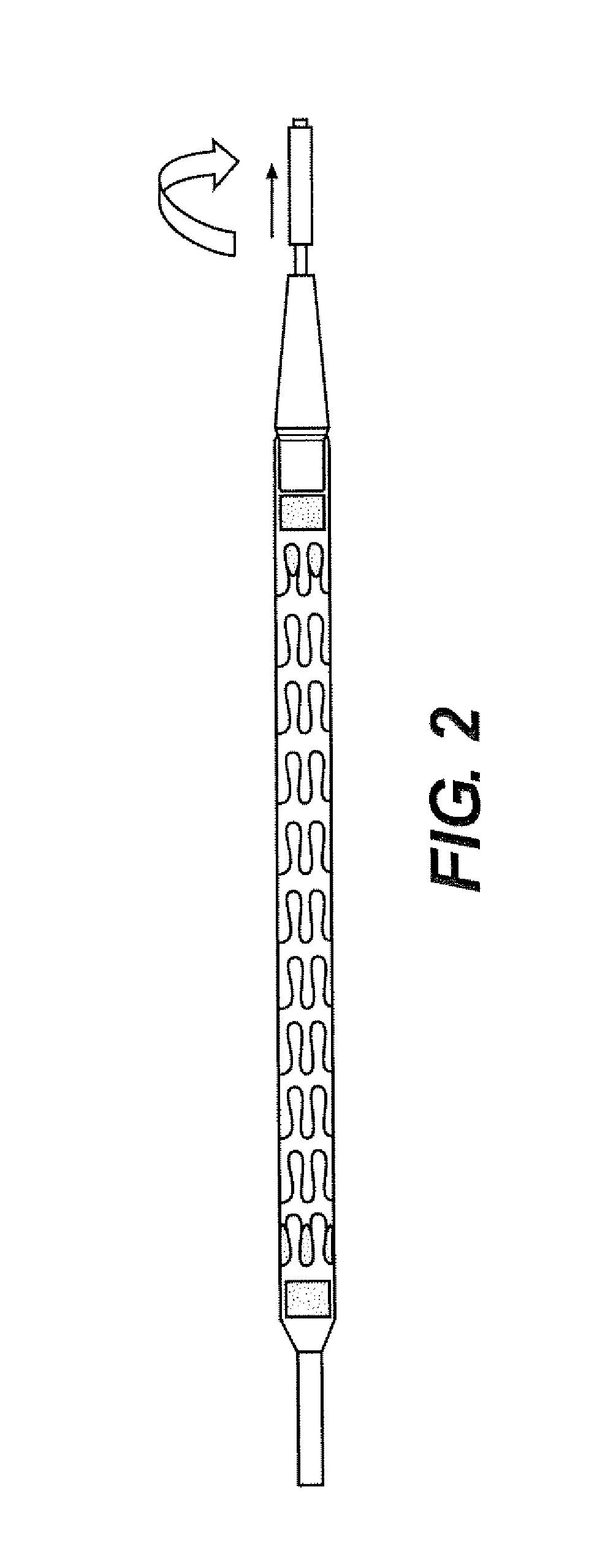Radiopaque markers comprising binary alloys of titanium
a technology of radiopaque markers and titanium alloys, which is applied in the field of radiopaque markers comprising binary alloys of titanium, can solve the problems of not being sufficiently radiopaque, affecting the flexibility of the stent, and expanding the stent size of nickel-titanium stents
- Summary
- Abstract
- Description
- Claims
- Application Information
AI Technical Summary
Benefits of technology
Problems solved by technology
Method used
Image
Examples
Embodiment Construction
[0023]The present disclosure is generally directed to titanium containing binary alloys that can be used in a wide variety of non-medical and medical applications. While the following discussion exemplifies medical device applications, the disclosure is not so limited. Rather, it is appreciated that the disclosure broadly encompasses any application that could utilize the radiopaque and weldable characteristics of the resulting alloy. Therefore, while the invention described below is directed to the binary, radiopaque alloy attached to a medical device, such as a stent, it is understood that the present invention is applicable to other medical devices usable in a body lumen or outside a body lumen, or more generally to non-medical devices.
[0024]Commercially available materials used in medical devices typically comprise superelastic alloys. While such alloys have been extremely successful in applications that exploit their self-expanding properties, such as stents and embolic filteri...
PUM
 Login to View More
Login to View More Abstract
Description
Claims
Application Information
 Login to View More
Login to View More - R&D
- Intellectual Property
- Life Sciences
- Materials
- Tech Scout
- Unparalleled Data Quality
- Higher Quality Content
- 60% Fewer Hallucinations
Browse by: Latest US Patents, China's latest patents, Technical Efficacy Thesaurus, Application Domain, Technology Topic, Popular Technical Reports.
© 2025 PatSnap. All rights reserved.Legal|Privacy policy|Modern Slavery Act Transparency Statement|Sitemap|About US| Contact US: help@patsnap.com



